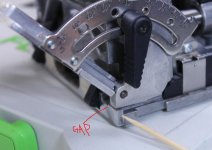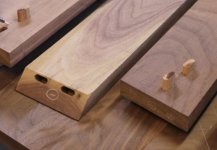Hello everyone,
I'm doing a lot of training with my new Domino with scrap pieces and everything is working pretty well except mitres. The height of the Domino mortises varies slightly on every second or third mortise I make, but I don't know why. I register the side pin first then slide the machine forward until it hits the edge, then apply pressure to the fence handle. With the other hand I apply the force to plunge inline with the machine. Still I get variations so often. Is there a secret tip or something to get consistent results?
I'm doing a lot of training with my new Domino with scrap pieces and everything is working pretty well except mitres. The height of the Domino mortises varies slightly on every second or third mortise I make, but I don't know why. I register the side pin first then slide the machine forward until it hits the edge, then apply pressure to the fence handle. With the other hand I apply the force to plunge inline with the machine. Still I get variations so often. Is there a secret tip or something to get consistent results?



